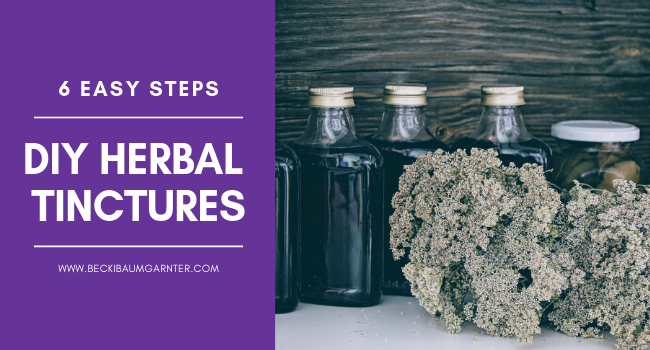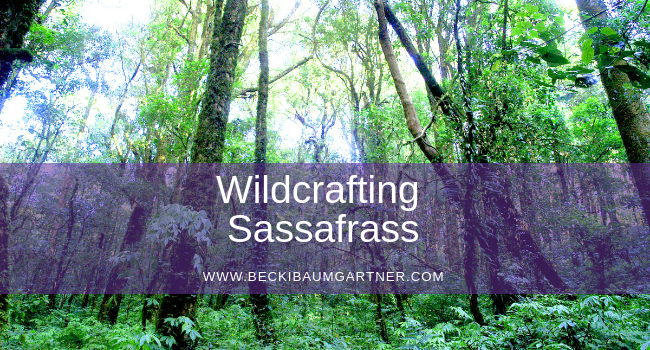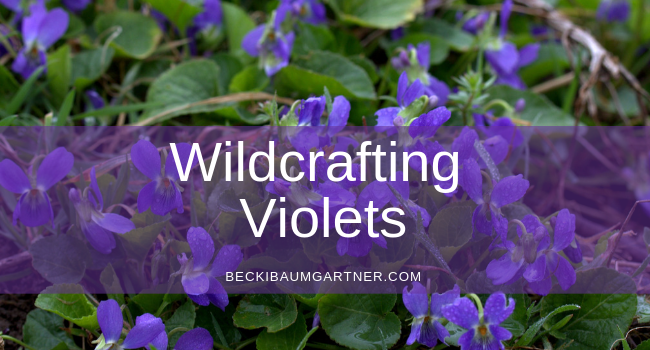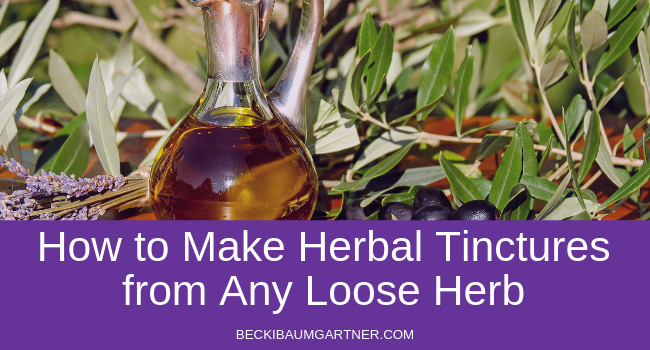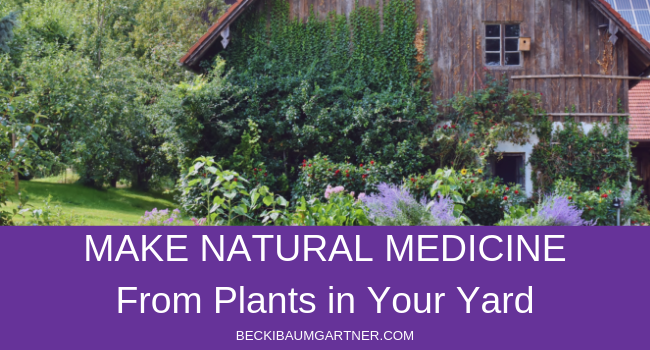
Wildcrafting dandelions is one of the easiest ways to get started using wild edible and medicinal plants.
The first step to wildcrafting is getting a couple of good field guides for the plants in your area.
Two of my favorites are:
- A Field Guide to Edible Wild Plants: Eastern and central North America (Peterson Field Guide)
- Identifying and Harvesting Edible and Medicinal Plants in Wild (and Not So Wild) Places by “Wildman” Steve Brill
Use your field guides to properly identify your plants.
And, always make sure the plants you choose are not sprayed with pesticides or exposed to chemicals!
In addition, wash your plants well before using.
If you don’t feel confident in identifying plants yourself, you can learn a lot through wildcrafting groups.
You can find wildcrafting groups on Meetup.com or by searching local venues for weed walks and wildcrafting classes.
Common Names for Dandelion (Taraxacum officinale)
The dandelion goes by many different common names.
Other names include:
- Bitterwort
- Blow-ball
- Cankerwort
- Clockflower
- Doonheadclock
- Irish Daisy
- Lion’s Tooth
- Piss-in-Bed
- Pissinlit
- Priest’s Crown
- Pu Gong Ying
- Puffball
- Swine’s Snout
- Taraxaci herba
- Taraxaci radix cum herba
- Telltime
- Yellow Gowan
- Wild Endive
Uses for The Common Dandelion
Dandelion plants are easy to identify and fun to use!
You can use dandelions both as food and medicine!
Wildcrafting Dandelions: Using Dandelion Leaves
Dandelion leaf tea is an excellent diuretic and can be used to help relieve cystitis, fluid retention, hepatitis, nephritis, and aid in weight loss.
It is an excellent, healthy diuretic because it is a natural source of potassium and replenishes any potassium lost through its diuretic action.
According to Incrediblesmoothies.com, “Dandelion greens have more protein per serving than spinach.
The greens themselves are 14% protein and contain all essential amino acids so it’s a complete protein. One chopped cup contains 1.5 grams of protein.”
Dandelion leaf tea is one of the finest diuretics known, at least equal to any known drug medicine. Thus dandelion leaf tea can be taken for fluid retention, cystitis, nephritis, weight loss, and hepatitis.
The Way of Herbs by Michael Tierra, L.Ac., O.M.D.
Dandelion Leaf Precautions
Though wildcrafted dandelion plants are safe and gentle, as with everything in this world you need to pay attention to precautions.
Dandelion tea may irritate the stomach lining in some individuals. It increases the amount of bile produced. People that have gallstones or gallbladder ailments should not drink dandelion tea. Occasionally, individuals who are allergic to plants in the daisy family may experience skin irritation when handling leaves or extract. Individuals who are diabetic should carefully monitor their blood sugar levels when drinking dandelion tea. The tea also counteracts the effects of antacids and drugs that reduce acid production in the stomach.
Kathleen Roberts, LoveToKnow Herbs
Wildcrafting Dandelions: Using Dandelion Root
Dandelion root helps decrease anemia, high blood pressure, and hypoglycemia (best when combined with ginseng and ginger).
It also aids in clearing obstructions from the bladder, gallbladder, kidneys, pancreas, and spleen.
Dandelion root is one of the safest and most popular herbal remedies. The specific name, officinale, means that it’s used medicinally. The cecoction is a traditional tonic. It’s supposed to strengthen the entire body, especially the liver and galbladder, where it promotes the flow of bile, reduces inflammation of the bile duct, and helps get rid of gallstones.
Identifying and Harvesting Edible and Medicinal Plants in Wild (and Not So Wild) Places by “Wildman” Steve Brill
My Personal Dandelion Favorites
I love to eat dandelions!
I often use dandelion greens raw in salads. Sometimes, the greens have a bit of a bitter taste, so I mix them with other greens and vegetables.
I also add a handful each of dandelion greens, violet leaves, and plantain leaves (run through a blender) to chili and soup bases for added vitamins and health benefits.
Dandelion flowers taste delicious battered and fried.
We also like the greens in sautéed with onions or boiled then soaked in Italian dressing with onions.
Sources:
- Brill, S. (1994.) Identifying and Harvesting Edible and Medicinal Plants in Wild (and Not So Wild) Places New York: HarperCollins.
- Dandelion. (n.d.) Empowerednutrition.com. Extracted October 7, 2011, from http://empowerednutrition.com/supplement-database/dandelion/
- Dandelion. (n.d.) Ohio Perennial and Biennial Weed Guide. Extracted October 7, 2011, from http://www.oardc.ohio-state.edu/weedguide/singlerecord.asp?id=950
- Dandelion Leaf. (n.d.) Alternative Health & Herbs Remedies. Extracted October 9, 2011, from http://www.healthherbs.com/product.php?pid=3356&n=Dandelion-Leaf
- How to Make Dandelion Coffee. (n.d.) eHow.com. Extracted October 7, 2011 from http://www.ehow.com/how_2119645_make-dandelion-coffee.html
- Tierra, M. (1998.) The Way of Herbs. New York: Pocket Books.
- Williams, J. (1995.) Jude’s Herbal Home Remedies: Natural Health, Beauty & Home-Care Secrets. St. Paul: Llewellyn Publications.
My Favorite Books for Wildcrafting & Using Herbs:
Below is a list of my favorite herb books. Enjoy!
- A Field Guide to Edible Wild Plants: Eastern and central North America (Peterson Field Guide)
- Great Smoky Mountains Wildflowers: When and Where to Find Them by William Hutson
- Identifying and Harvesting Edible and Medicinal Plants in Wild (and Not So Wild) Places by “Wildman” Steve Brill
- Jude’s Herbal Home Remedies: Natural Health, Beauty & Home-Care Secrets by Jude C. Williams, M.H.
- Ortho’s All About Herbs by Maggie Oster
- Rosemary Gladstar’s Herbal Recipes for Vibrant Health by Rosemary Gladstar
- Secrets of the Chinese Herbalists by Richard Lucas
- Sunset Herbs: An Illustrated Guide by The Editors of Sunset Magazine
- The Forager’s Harvest: A Guide to Identifying, Harvesting and Preparing Edible Wild Plants by Samuel Thayer
- The Herbal Drugstore by Linda B. White, M.D.
- The Natural Physicians’ Healing Therapies: Proven Remedies Medical Doctors Don’t Know by Mark Stengler, ND
- The Scientific Validation of Herbal Medicine by Daniel B. Mowrey, Ph.D.
- The Way of Herbs by Michael Tierra, L.Ac., O.M.D.
- Wildflowers of the Land Between the Lakes Region, Kentucky, and Tennessee
